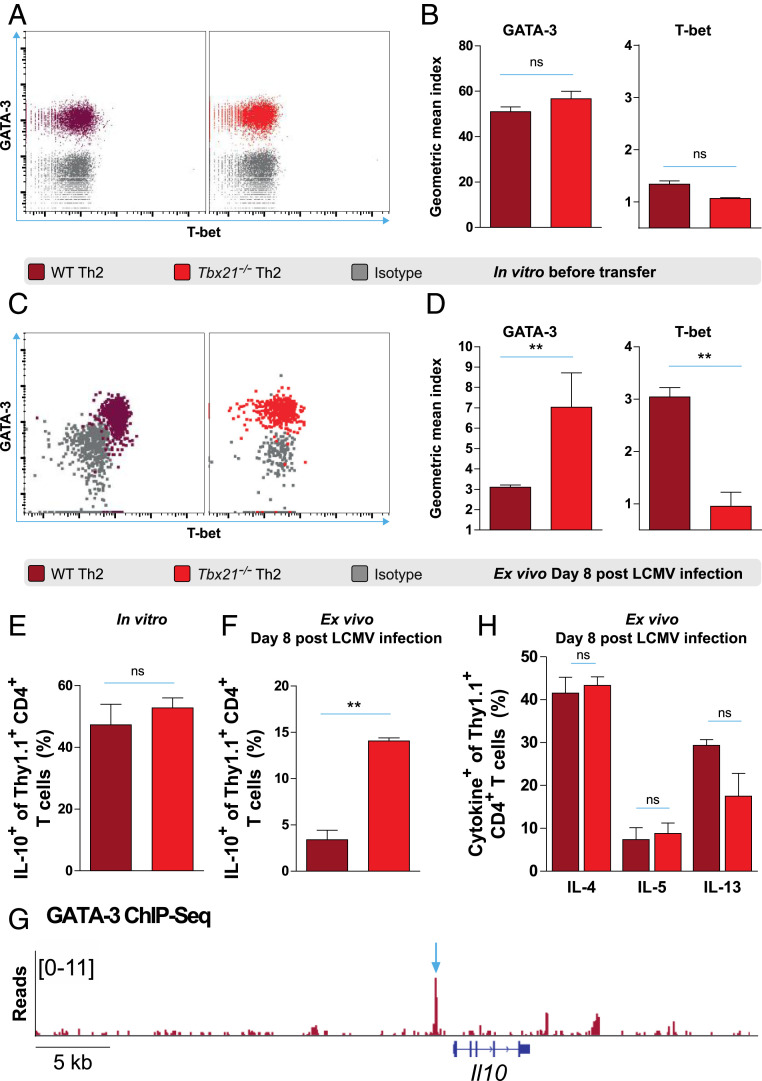Fig. 2.
Tbx21−/− Th2 cells but not WT Th2 cells stably maintain IL-10 production in vivo after LCMV infection. (A) Representative fluorescence-activated cell sorting (FACS) plots and (B) geometric mean indices of GATA-3 and T-bet vs. isotype control stainings of LCMV-specific WT Th2 and Tbx21−/− Th2 cells after 10 d of in vitro differentiation. (C) Representative FACS plots and (D) geometric mean indices of GATA-3 and T-bet vs. isotype control stainings of adoptively transferred LCMV-specific WT Th2 and Tbx21−/− Th2 cells ex vivo on day 8 after LCMV infection. (E) Frequencies of IL-10–producing cells in WT Th2 and Tbx21−/− Th2 cells after 10 d of in vitro differentiation and (F) in adoptively transferred WT Th2 and Tbx21−/− Th2 cells ex vivo on day 8 after LCMV infection. (G) GATA-3 occupancy at the Il10 locus. The arrow indicates prominent GATA-3 binding at the Il10 promoter 1.1 kbp upstream of the transcriptional start site. Published GATA-3 ChIP-Seq data were obtained from the Gene Expression Omnibus database (accession no. GSM523226) (SI Appendix) (65). (H) Frequencies of IL-4–, IL-5–, and IL13–producing cells in adoptively transferred WT Th2 and Tbx21−/− Th2 cells ex vivo on day 8 after LCMV infection. All experiments were performed at least twice, and each experimental group included n ≥ 3. Data are representative or pooled and expressed as mean ± SEM. Asterisks indicate statistically significant differences as analyzed by t test (**P < 0.01). ns, not significant in all figures.

